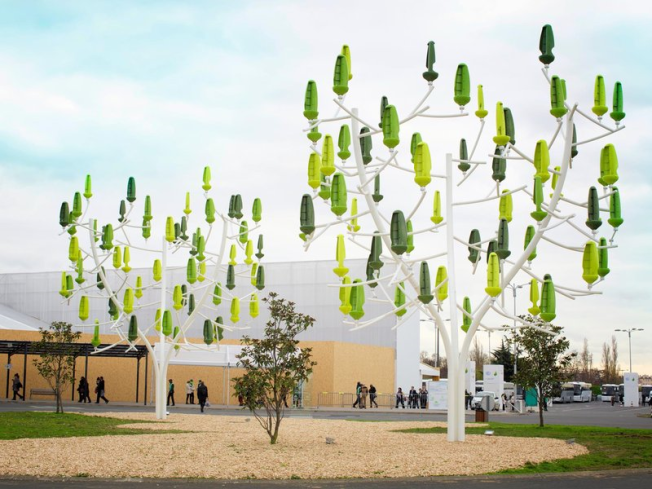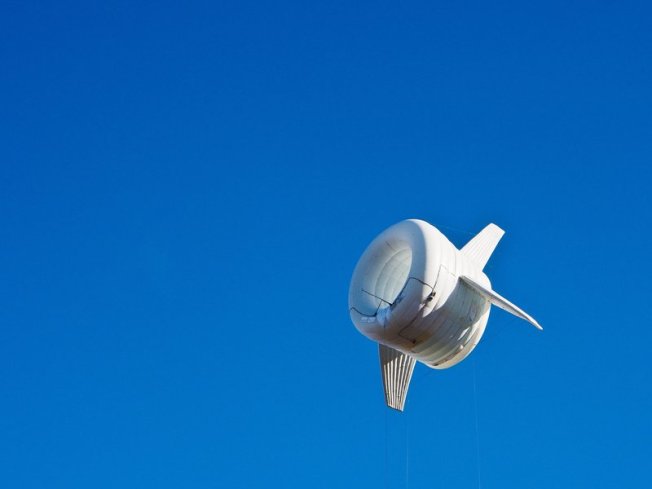As oil companies drill ever deeper to meet the world’s thirst for fuel, a new wave of clean energy entrepreneurs are also searching far and wide for sources—but in the opposite direction.
That’s because as you go higher, ground friction diminishes, giving way to increasingly stronger winds; at extreme elevations, ranging between 20,000 and 50,000 feet depending on your location, you enter what’s called the jet stream, a swirling mass of air with winds upward of 100 miles per hour. As wind speeds double, the potential supply of energy grows eight-fold, so these air currents along the outer reaches of the earth’s atmosphere can be thought of as a kind of vast treasure trove of renewable power. In fact, an analysis published in the journal Energies concluded that “the total wind energy in the jet streams is roughly 100 times the global energy demand.”
While the notion of tapping into the all-powerful jetstream appears to be out of reach, at least for now, a handful of wind energy start-ups are in a race to develop technologies they hope will someday take advantage of energy found at more modest altitudes. Among them is Altaeros Energies, which recently announced plans to hoist an airborne wind turbine to an unprecedented altitude of 1,000 feet above a remote site in Alaska. Over the course of 18 months, their Buoyant Airborne Turbine (BAT) prototype will supply power to about a dozen off-the-grid homes.
Though no start date has been set for the project, the pilot is set to begin as soon as the company completes the permit process, Altaeros Energies co-founder Adam Rein says.
“Places like Alaska are perfect for these systems we developed,” Rein says. “At these sites, you have cold rugged conditions where the ground is frozen, which makes it difficult to put up regular turbines. If we can demonstrate that [BAT] can work in Alaska, it can work anywhere for more or less the same cost of setting up other turbines.”
While the idea to create air-lifted power generators has been floated for some time now, it’s only recently that firms have assembled prototypes with the goal of producing something commercially viable. These include concepts such as the Laddermill turbine, which consists of a rotating loop of “power kites,” and the Magenn Air Rotor System, a giant helium-filled rotor that its inventors has described as a “spinning Goodyear blimp.” But so far, it’s only the Boston-based Altaeros that has been able to secure funding for a trial run: The pilot project is subsidized in part by the Alaska Energy Authority, which awarded the company a $1.3 million dollar grant to determine the feasibility of expanding technology to other isolated regions.
From a distance, the BAT looks a bit like a massive donut, except for a standard three-blade, horizontal axis turbine in the center. With four protruding fins for stability, the helium-filled outer shell, made from a highly-durable fabric, is attached to three high-tensile strength tethers that hold the turbine securely in place.
Once the BAT is suspended, an onboard sensor system enables the turbine to operate autonomously, even changing its position to harvest more wind energy or dock whenever it detects a severe thunderstorm. Energy is transferred to a power station on the ground, where an interface distributes power to a microgrid or grid connection.
In all, the BAT is capable of delivering two-to-three times the amount of power produced by conventional towers, Rein says. The inflatable turbine is also equipped with an emergency venting system that allows gases to be released gradually should the structure needs to be brought back to ground level. Monitoring would be done remotely; specialists would only be deployed periodically to top off any lost helium.
Altaeros hopes data collected during the 18-month pilot can be used to design commercial turbine units for niche markets, including remote military bases and disaster zones.
Lest it sound too good to be true, there is still the issue of cost. At 18 cents per kilowatt-hour, annual energy costs of the BAT are still too high for most major markets in America, where the average consumer pays about 13.4 cents per kilowatt-hour.
But for communities located off the main power grid, airborne wind turbines offer an attractive alternative, albeit an extreme one. Alaskan residents living in these far-off rural communities sometimes pay as much as a dollar per kilowatt-hour for fuel from imported diesel housed in nearby storage tanks.
Competing designs, like the Makani’s flying wing turbine, can conceivably produce power at a much lower cost, Rein says, at least at the moment. As way of boosting the technology’s mainstream appeal, he says the company opted to go with the more expensive but established lift technology used to deploy Aerostat craft—used in the iconic Good Year blimp—as way of boosting its reliability. (The blimp claims to be able to withstand hurricane force winds and lightning strikes).
“It’s safe and reliable,” Rein says. “No one ever worries that a blimp during a sporting even will fall into the stadium.”
Besides safety, Rein says another advantage of his company’s invention is that, unlike tower turbines, inflatable structures can be transported inside small containers, making them easy to deploy in a day’s time without the need for cranes and other heavy equipment. Additional gadgets, such as wireless communication devices, can also be mounted to provide other commodities like WiFi. But the company won’t attempt, at least for the forseeable future, to make a play in major markets.
“You won’t see BAT sitting above the Empire State Building,” he says. “There are too many community concerns in those areas. So in that sense, we’re not trying to replace traditional turbines, but rather expand access to clean power to where it typically hasn’t been technologically feasible.”
courtesy of: http://www.smithsonianmag.com/innovation/

